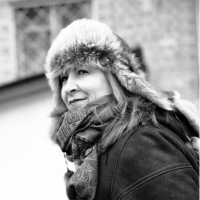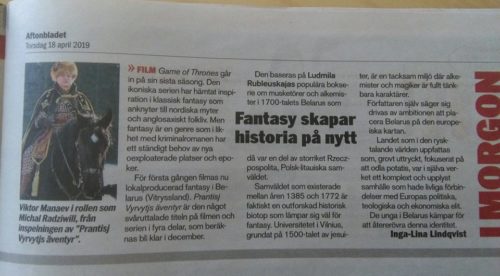
Людміла Рублеўская “ЯНЫ” Вершы пра фобіі і маніі
Прысвячаецца надмагіллям Готланда
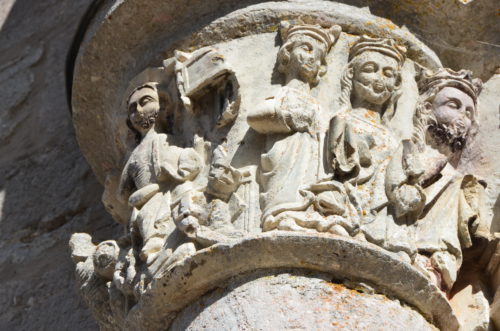
“THEY”
Poems about phobias and mania
Dedicated madmary Gotland …
They were lying on the faded grass or stood lean to the rock. Runes and Latin words on their entwined in a maze, which only wandering ghosts, archaeologists and poets. Those at the entrance to the gargoyle-clad Cathedral, or the Cathedral, rubbed to Shine thousands of soles… So need to. That’s right. As rub off names, rub off sins… I stroked the cool stone bodies and tried to unravel the signs: here’s something similar to scissors… Here to peel off a sea monster… That bends the branches of the tree, Iggdrasil… Here, on an island in the middle of the cold sea, behind the old masonry with forty-four towers, in the middle of rocks, stones and roses, what were people afraid of, that lie under these tombstones? They whispered it to me in waves, leaves, rain and gravel… They whispered to me, “don’t worry… Have no fear…”
…Яны ляжалі на выгарэлай траве ці стаялі, прыхінутыя да скалы. Руны і лацінскія словы на іх спляталіся ў лабірынты, якімі блукаюць толькі прывіды, археолагі і паэты. Тыя, што пры ўваходзе ў аблеплены гаргуллямі сабор, альбо ў самім саборы, да бляску нашараваныя тысячамі падэшваў… Так трэба. Так правільна. Як сцяруцца імёны, сцяруцца грахі… Я гладзіла прахалодныя каменныя целы і спрабавала разгадаць знакі: вось нешта падобнае да нажніцаў… Вось лупіцца марская пачвара… Вось выгінае голле дрэва, ці не Ігдрасіль… Тут, на востраве пасярод халоднага мора, за старым мурам з сарака чатырма вежамі, пасярод скал, камянёў і ружаў, чаго баяліся людзі, што ляжаць пад гэтымі надмагіллямі? Яны шапталі мне пра гэта хвалямі, лісцем, дажджом і жвірам… Яны шапталі мне – “Не бойся… Не бойся…”
ЧАЛАВЕК, ЯКІ БАЯЎСЯ СПАЦЬ ЛЕЖАЧЫ
Ён баяўся спаць лежачы, верыў – душа адляціць.
Ён грувасціў падушкі, хапаўся за вострыя думкі.
Liudmila RUBLEUSKAJA AT THE SAME TABLE SAT…
I found a translation of my first story.
Liudmila RUBLEUSKAJA
AT THE SAME TABLE SAT…
(from The Fable Tower of Ivory)
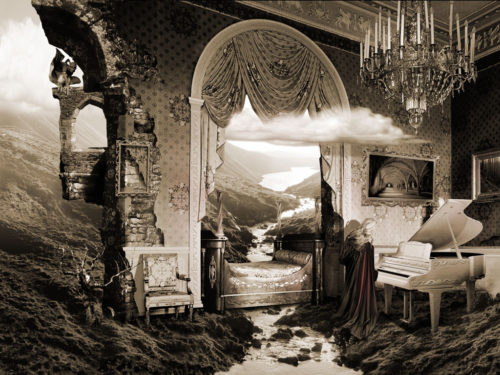
I’m a woman, that is why I’m inguisitive to mortal sin. I’m a writer, that is why I’m inguisitive twice as much, just to super-mortal sin.
People did the oddest things because of their ingnisitive bent — for instance, they built the Tower of Babel, travelled round the world and created Homunculas…
By the way, some words about Faustus… I open the thick ‘Necronomicon’, the book of spells borrowed from Howard. Its iron-hard black leather cover is made of some unknown skinned animal. I’ve got some spare time, just enough to forget about my children, who are going to cover the floor I’ve just mopped with lots of dirty little footsteps.
I concentrate…I get interested in…I’ve never seen Elemental Spirits. The Spirit of Earth is to came first. It is either a gnome or a house-spirit. I’ll be able to give olders to him in case I’m not afraid of Elements. Once, wizards’pupils had to spend some days on end in dark caves during their initiation ceremonies they had to climb up inaccessible rocks to show their ability of ruling the Spirits of Earth…
In my view, the Earth is the very sail out of which we dig potatoes…
A’m I free from the quality all gnomes possess — greediness? If not, then I’d better not deal with them…
Have I ever been greedy? Or have I not? If I try to call to my mind same casual cases…
Я і Дыяна Сэтэрфілд?
З кім толькі не супастаўлялі… Новая нечаканасць.
ABSTRACT Zavadskaya Julia THE METAFICTIONAL TECHNIQUES IN THE NOVELS «THE THIRTEENTH TALE» BY DIANA SETTERFIELD AND «THE DUNGEONS OF ROMULS» BY LYUDMILA RUBLEVSKAYA (МЕТАРОМАННЫЕ ТЕХНИКИ В ПРОИЗВЕДЕНИЯХ «ТРИНАДЦАТАЯ СКАЗКА» ДИАНЫ СЕТТЕРФИЛД И «ПОДЗЕМЕЛЬЯ РОМУЛА» ЛЮДМИЛЫ РУБЛЕВСКОЙ)
The structure of the thesis. The thesis consists of an introduction, three chapters, summaries to the chapters, conclusion.
Impression
Impression
Ludmila Rubleŭskaya, traduction par Yuliya Novik
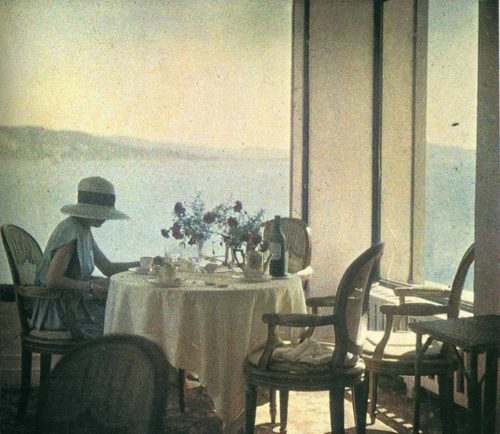
…Un des journaux de Paris en parlerait,
Je le lirai mangeant des huîtres au citron…
La cigarette se veut une rime, elle a un bord doré, le goût menthol…
Zut… Jamais tabac et menthe n’ont un seul arôme.
Roman “Gulnia u Albarutheniu” (Jeu en Albaruthenia)
Ludmila Rubleŭskaya, traduction par Yuliya Novik
Extrait du livre « Sutarenni Romula » (« Les labyrinthes de Romulus »), roman “Gulnia u Albarutheniu” (Jeu en Albaruthenia)
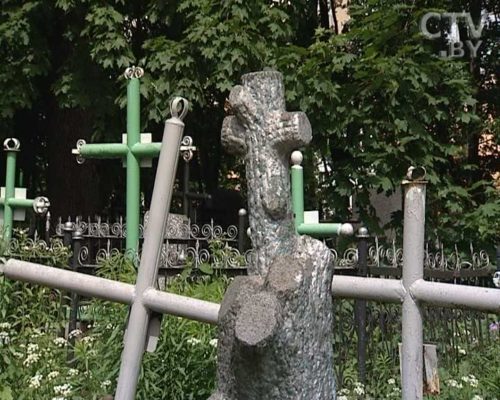
Le monde rappelle une feuille du papier froissée, alors nous n’y sommes pas à l’aise et quittons le chemin choisi en glissant. Et là nous tombons sur une flexion, estompée jusqu’à former un orifice… Où peut-on aller à travers cette petite fenêtre inopinée ? Les notes de Razalia Ivanaŭna dans un petit cahier vert à l’intitulé doré « Leningrad » commencent avec les mots « Mensk, 1933 ». Il serait logique de supposer qu’on se retrouvera dans le même endroit où on est en ce moment, mais à une autre époque, et la première chose qu’on verra sera le cimetière non ruiné, l’église catholique, les chapelles peintes par le fameux artiste Yan Damel… Mais ce n’est pas si simple … Ce n’est pas comme aller voir la grand-mère Hanna manger des crêpes, ou le voisin Radaslaŭ boire un verre de cognac. Tu pénètres Là-bas, dans un milieu étranger, comme si tu touchais à un corps nu d’autrui via un rideau en polyéthylène.
Ludmila Rubleŭskaya, traduction par Yuliya Novik
***
Quand des poèmes s’écrivent, tu as le droit de mourir peu à peu,
Savourant chaque goutte de la mort, comme du miel et de la ciguë,
Et ne saluer que des croix, et croire aux paroles,
Oublier que ton sang est toxique.
Quand des poèmes s’écrivent, tu n’es plus obligé à mentir
parlant de l’union entre toi et tout abruti dans ce monde.
Quitter, comme l’infante de Vélasquez, la toile.
Et en découvrir les détails non peints.
Quand des poèmes s’écrivent, tu parles de tout – de la liberté et des ailes,
Sans crainte de faire trop d’emphase.
Tu seras le dernier, le premier…
Ecriras sans mentir, sans tromper…
Oh mon Dieu, quelle tentation, quelle plénitude,
Quand des poèmes s’écrivent…
Mais ils ne s’écrivent pas, des poèmes…
Ludmila Rubleŭskaya Poète
Poète

Poète caresse des pierres chenues.
Des femmes, il n’en manque pas.
Le vent se pose dans un lit en pierre
En éteignant les feux stellaires—
Poète carresse des pierres chenues.
Il leur déclame des poèmes tournés en houille.
Des écouteurs vivants, il n’en ne manque pas
Mais les vivants n’ont pas besoin
Que l’on leur parle de la douleur.
Pour eux,
Poète n’est qu’un pécheur,
Dernier, premier…
Sûrement, un fou…
Il sanglota au fond du champ,
Son coeur saignait, sur des rochers.
Il s’en alla, voûté…
En nimbe argenté
Ses cheveux luisaient sous la pleine lune.
… Et derrière
lui, enivré et enroué,
roulaient les pierres
comme la rosée en gouttes.
Ludmila Rubleŭskaya, traduction par Yuliya Novik
Daguerreotype horror novel
Daguerreotype
horror novel
Rublieuskaja’s new novel is set in the decadent years at the end of the nineteenth century, but opens in our times. The young journalist Sierafima is setting off to inspect a flat that she wishes to rent from a young man, the biologist Haljash, with whom she is secretly in love. He is getting ready to leave for the USA, where his fiancee is waiting for him in one of the universities there. The two of them are sorting things out in the flat when Haljash discovers among his grandfather’s papers a daguerreotype and a diary that belonged to an unknown woman… Mysterious events dating back to the 1890s unfold before the reader. The owners of a photographic studio in a small provincial Belarusian town – the beautiful, independent-minded Bahuslava and her father Varaksa Nichiel – specialise in portraits of the newly deceased; they have to set off on an expedition to photograph a unique ethnographical collection on the remote, sinister estate of Zhuchavichy. The current owner of the estate, Prince Shymon Kahaniecki, is believed by the local villagers to be a werewolf. The novel encompasses elements of the Gothic, the horror story, a passionate love affair in spite of everything, and the merciless baseness of humanity. A solution to this romantic and terrifying story is found only in our day.
THE DAGUERREOTYPE
Daguerreotype. horror novel. Урывак з раману “Дагератып” на ангельскай.
Праграма Books From Belarus
http://booksfrombelarus.net/#56
Daguerreotype
horror novel
Rublieuskaja’s new novel is set in the decadent years at the end of the nineteenth century, but opens in our times. The young journalist Sierafima is setting off to inspect a flat that she wishes to rent from a young man, the biologist Haljash, with whom she is secretly in love. He is getting ready to leave for the USA, where his fiancee is waiting for him in one of the universities there. The two of them are sorting things out in the flat when Haljash discovers among his grandfather’s papers a daguerreotype and a diary that belonged to an unknown woman… Mysterious events dating back to the 1890s unfold before the reader. The owners of a photographic studio in a small provincial Belarusian town – the beautiful, independent-minded Bahuslava and her father Varaksa Nichiel – specialise in portraits of the newly deceased; they have to set off on an expedition to photograph a unique ethnographical collection on the remote, sinister estate of Zhuchavichy. The current owner of the estate, Prince Shymon Kahaniecki, is believed by the local villagers to be a werewolf. The novel encompasses elements of the Gothic, the horror story, a passionate love affair in spite of everything, and the merciless baseness of humanity. A solution to this romantic and terrifying story is found only in our day.
THE DAGUERREOTYPE

